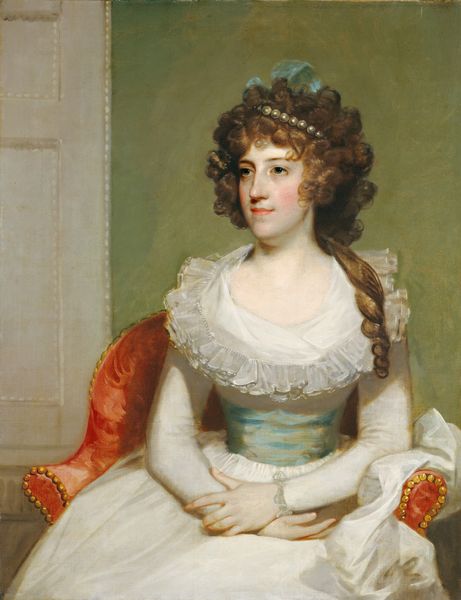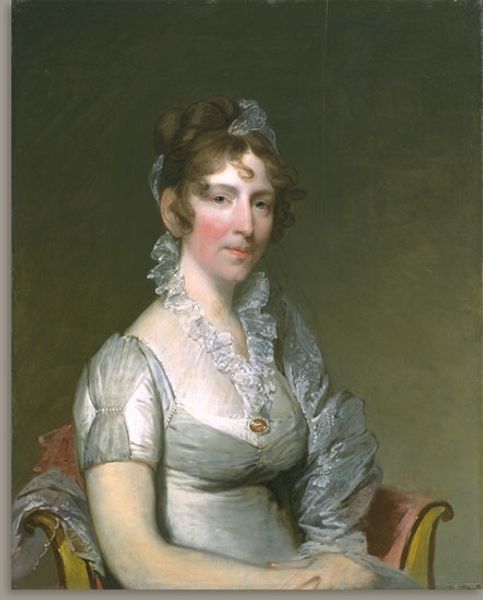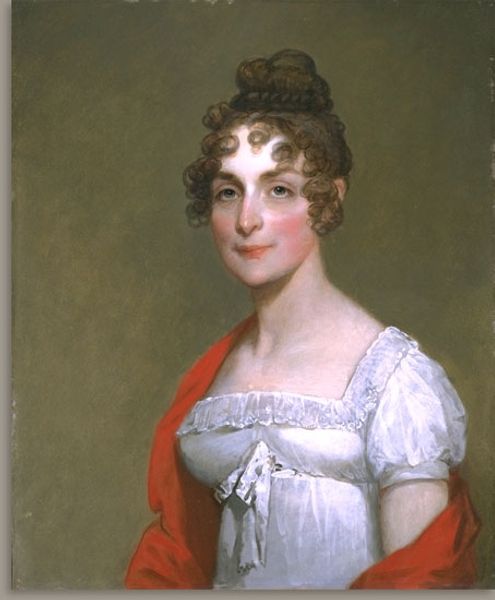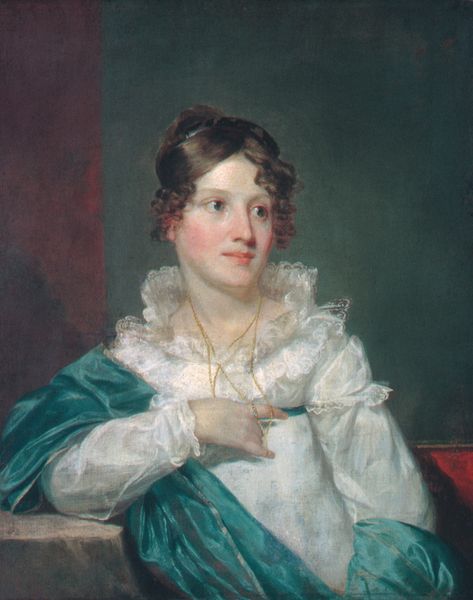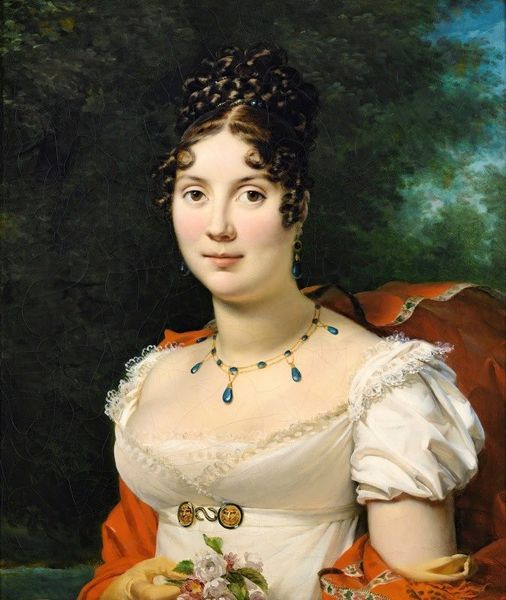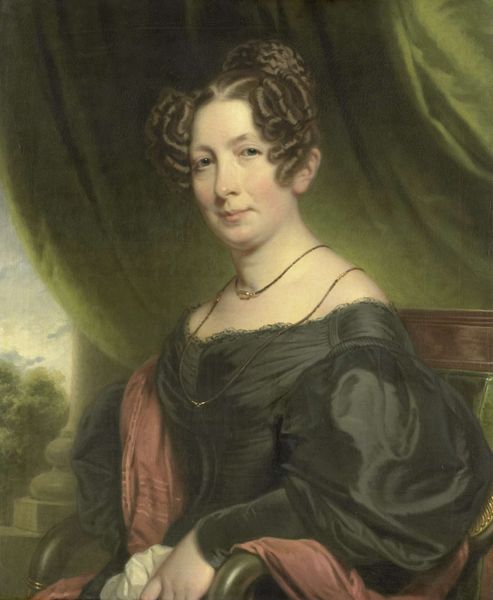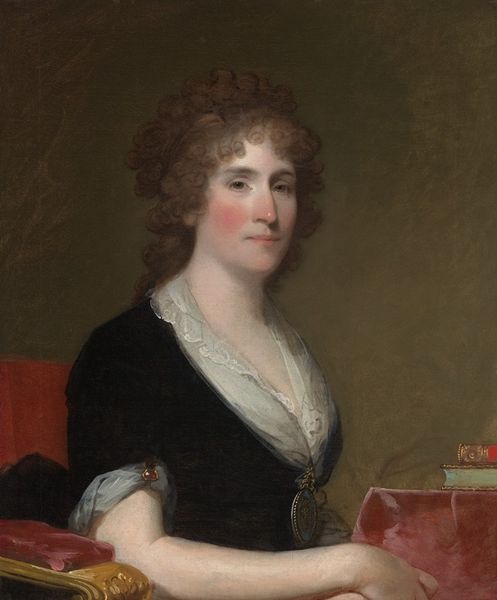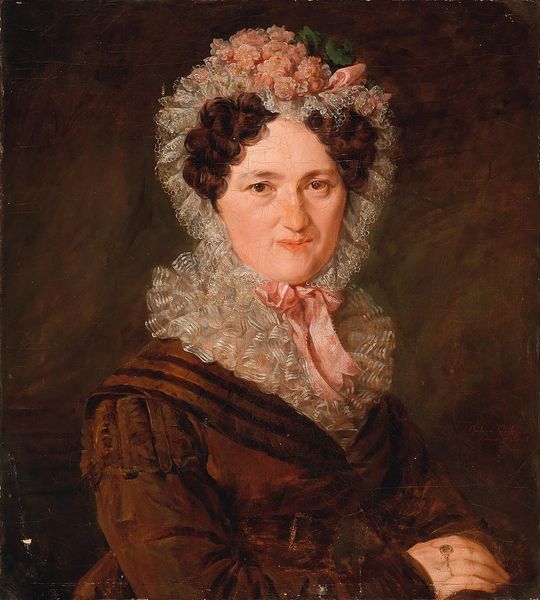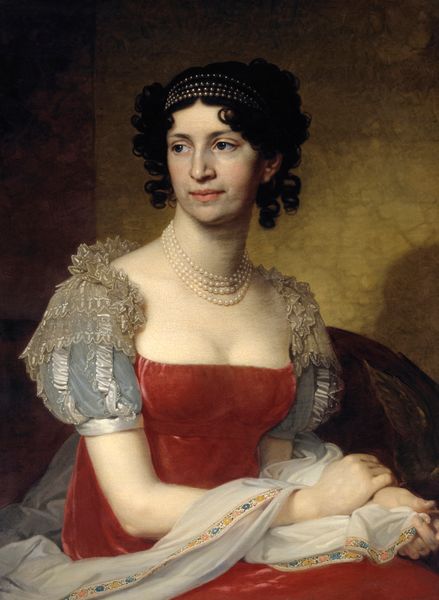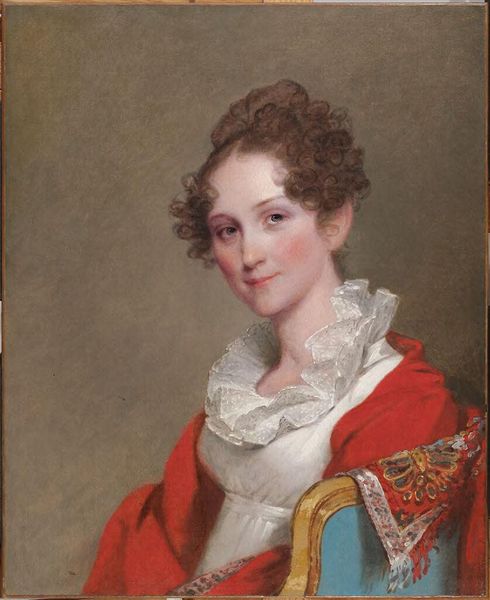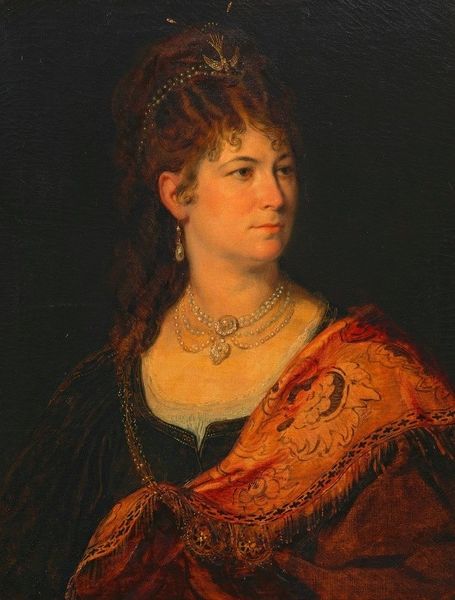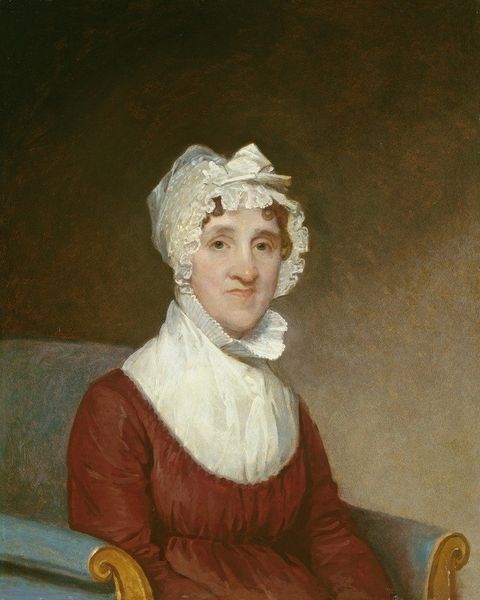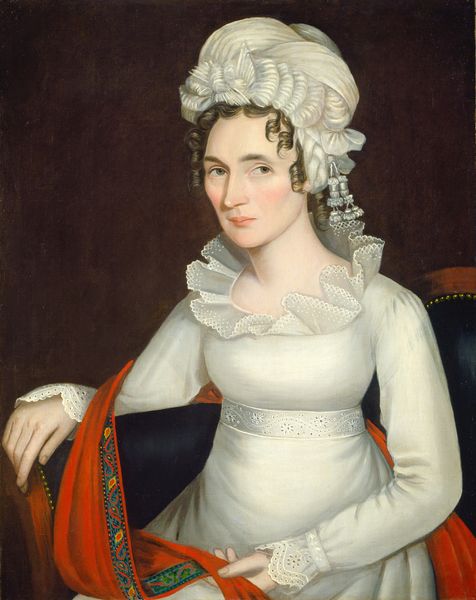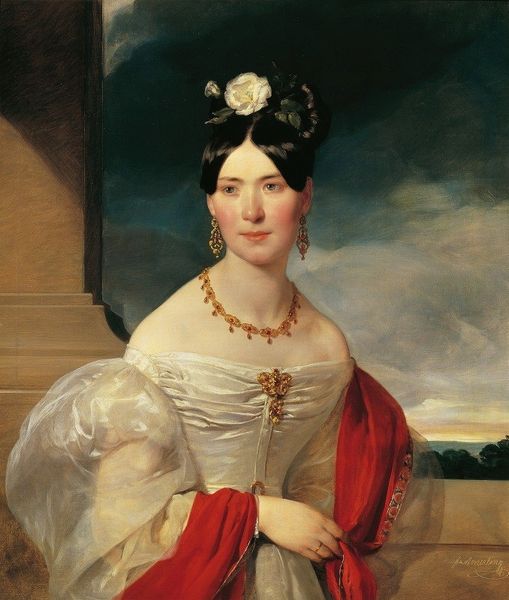
painting, oil-paint
#
portrait
#
figurative
#
neoclacissism
#
painting
#
oil-paint
#
oil painting
#
romanticism
Copyright: Public Domain: Artvee
Curator: Gilbert Stuart’s "Catherine Yates Pollock," painted between 1793 and 1794, offers us a glimpse into the life of a woman within the early American elite. Editor: I’m immediately struck by the contrast of textures. The softness of her dress, the smoothness of her skin against the very stark background. There is a tension between form and void. Curator: Precisely! Stuart, as a prominent portraitist, often navigated the complexities of portraying status and virtue. We can consider how portraiture at the time played a role in establishing a new American identity, modeling ideas about citizenship through the portrayal of family and individuals. Editor: Indeed, and observe how Stuart employs light. The way it models her face, for example, creating depth and lending her presence an almost tangible quality. Her pale complexion practically glows against that deep green, drawing you right in. Curator: And let's consider the historical context of fashion. The high-waisted gown reflects the Neoclassical style influencing fashion and aesthetics, mirroring the broader interest in ancient Greek and Roman ideals. These visual choices placed Pollock squarely within elite circles. Editor: Looking at the painting, the composition itself strikes me. She’s seated, yet there’s this slight twist of her torso, offering a sense of dynamism, movement held momentarily. And the somewhat loose handling of paint – almost unfinished in the background – creates this captivating ambiguity. Curator: These paintings weren’t just artistic representations but important social documents. Patrons commissioned art like this to be placed on display, where these images could influence the way families were perceived and cemented their position within the community. It was carefully managed self-fashioning. Editor: I agree; analyzing the relationship of the textures and tonal value creates depth within the composition, offering insight into a young nation that balances its neoclassical interest in idealized civic virtue and burgeoning democratic ideals. The soft blending is interesting; nothing is delineated precisely, so we're looking at something ideal and tangible all at once. Curator: Indeed. Understanding Stuart’s Catherine Yates Pollock means considering how art shapes and reflects the power structures of its time. Editor: And, simultaneously, the artist's remarkable capacity to synthesize technical skills with evocative visuality. A dialogue between historical influence and compositional nuance is presented to its viewers, creating a work that has lasted.
Comments
No comments
Be the first to comment and join the conversation on the ultimate creative platform.
